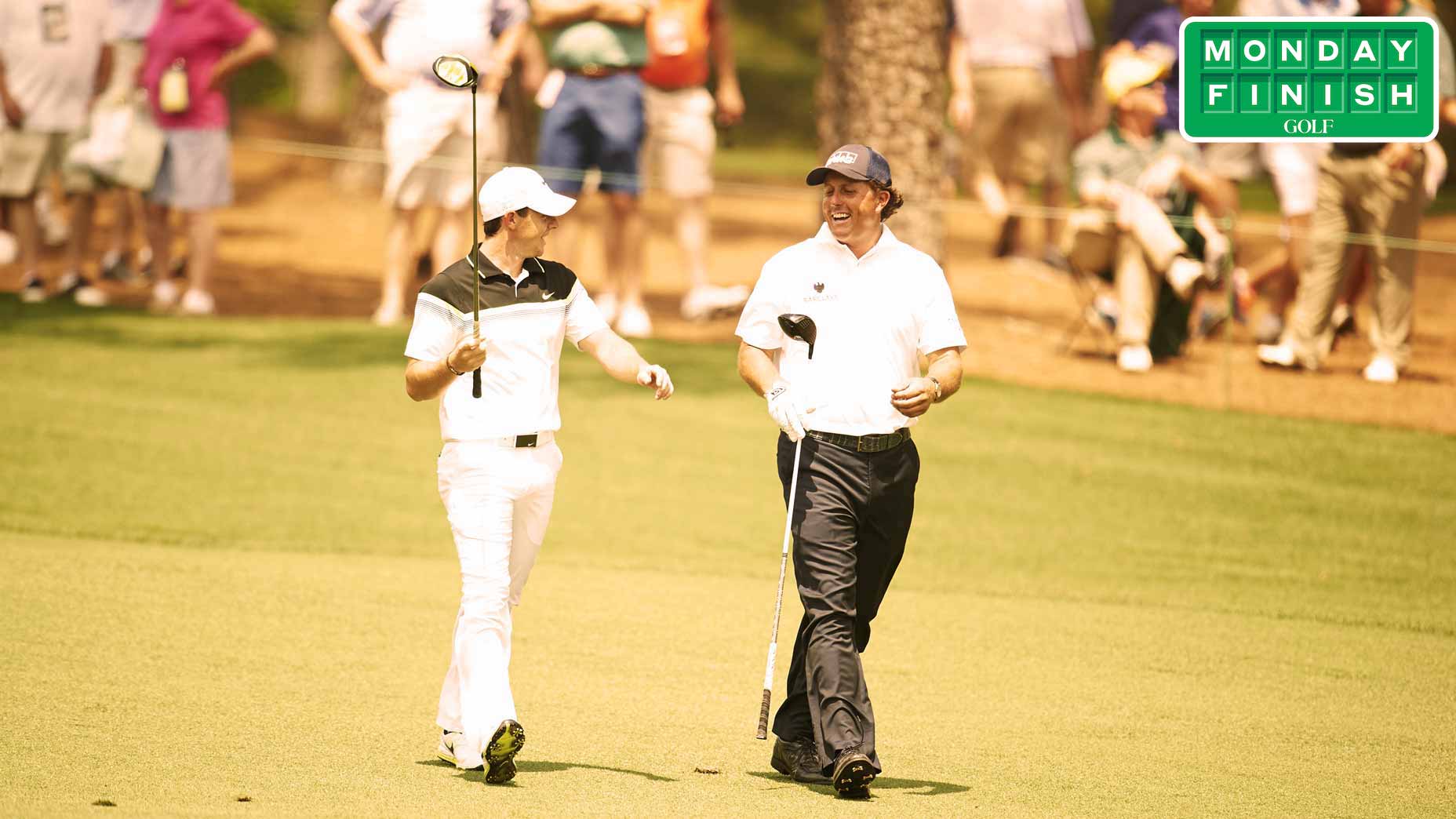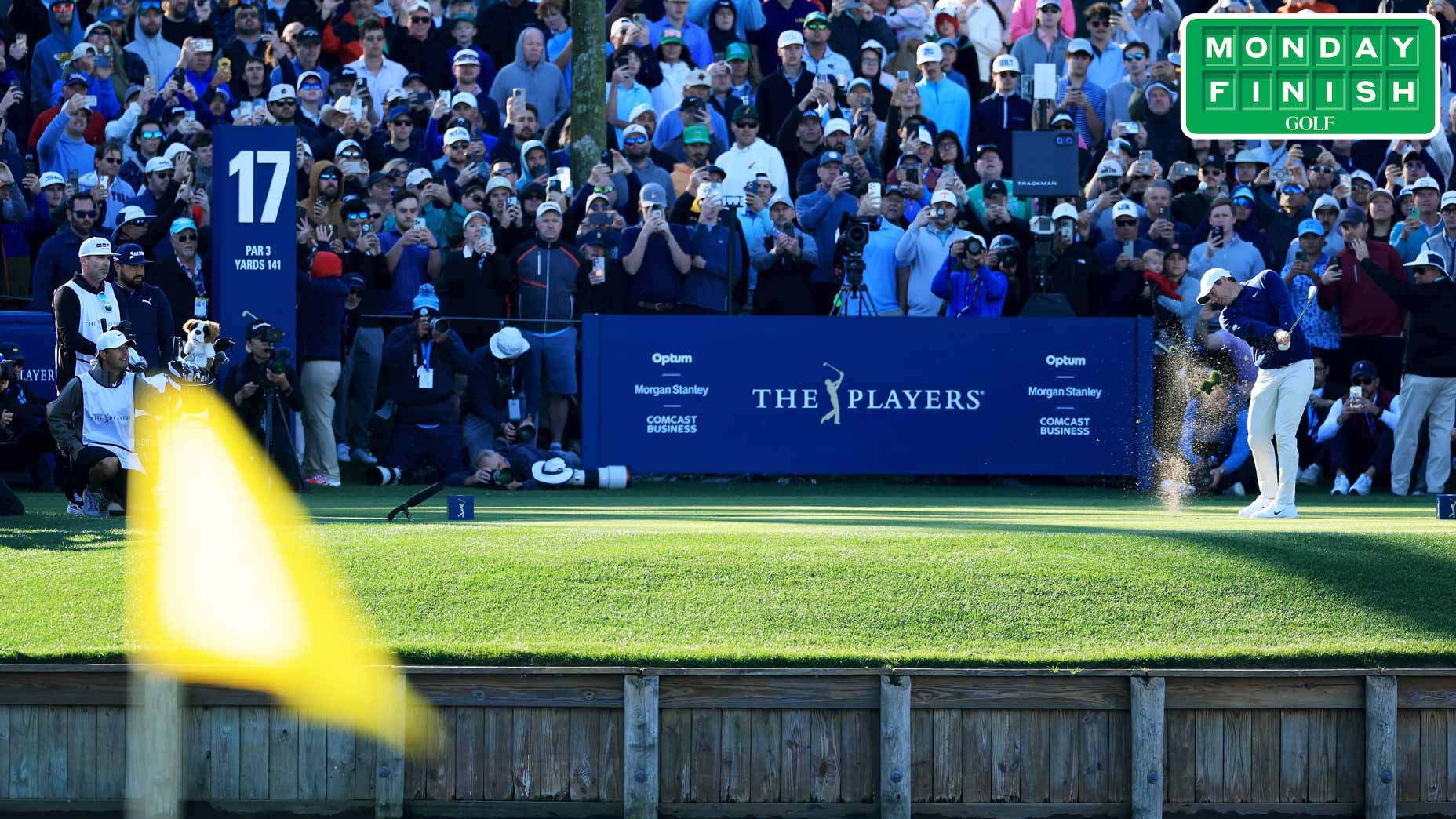News
Why Rory McIlroy’s parents missed his emotional Masters win
Gerry and Rosie McIlroy were noticeably absent from their son’s rousing Masters win. On Wednesday, Rory explained why.2025 Chevron Championship Friday tee times: Round 2 groupings
Full 2025 Chevron Championship tee times for Friday’s second round in Texas, featuring Nelly Korda, Charley Hull and more.2025 Zurich Classic Friday tee times: Round 2 groupings
Full 2025 Zurich Classic tee times for Friday’s second round in Louisiana, featuring Rory McIlroy, Shane Lowry and more.Want an inside look at the growth of women’s golf? Spend a day at the Desert Classic
Women make up nearly a third of the recreational golfers in America, and at the Desert Classic, hundreds of them showed up to play—and party.2025 LIV Golf Mexico City: TV schedule, streaming info, how to watch
How to watch the 2025 LIV Golf Mexico City tournament this week, including a full LIV Golf Mexico City TV schedule and streaming info.2025 Chevron Championship Thursday TV coverage: How to watch Round 1
How to watch the 2025 Chevron Championship on Thursday, including full Chevron Championship TV coverage and streaming info for Round 1.2025 Zurich Classic Thursday TV coverage: How to watch Round 1
How to watch the 2025 Zurich Classic on Thursday, including full Zurich Classic TV coverage and streaming info for Round 1.Why Rory McIlroy’s Masters win was ‘weirdest day ever’ for Shane Lowry
Rory McIlroy’s Masters win capped a strange day for his best friend on Tour, Shane Lowry, who’d been fighting a battle of his own.Tour Confidential: Where does Rory McIlroy’s Masters win rank among the best ever?
GOLF’s editors and writers discuss where Rory McIlroy’s Masters win ranks among the best ever and more in this week’s Tour Confidential.Tour Confidential: Unpacking Rory McIlroy’s dramatic Masters win
GOLF’s editors discuss Rory McIlroy’s thrilling Masters win and what to make of it going forward for 2025 and beyond.Who’s going to win the 2025 Masters? Our writers make their picks
Rory McIlroy and Bryson DeChambeau are locked in a battle atop the leaderboard at Augusta National. Here’s who our staffers think will win.What’s been the biggest surprise thus far at the Masters?
What has been the biggest surprise thus far at the 2025 Masters? Our GOLF.com staffers share their thoughts.Which big name at Masters is poised to make a Friday charge?
Which big name will make a charge up the leaderboard Friday at Augusta National? Our GOLF.com staffers make their picks.Tour Confidential: Who needs a Masters win the most?
This week in Tour Confidential, we look ahead to the 2025 Masters and break down the finish of the 2025 Augusta National Women’s Amateur.Tour Confidential: Masters sleepers, Viktor’s projection and Florida Swing lessons
We discuss Viktor Hovland’s surprising win at Valspar, Justin Thomas’ close call, Masters sleepers, and lessons from the Florida Swing.Dahmen’s heartbreak, JT’s surprising advice, caddie intrigue | Monday Finish
Joel Dahmen sent a message after a heartbreaking loss, while Justin Thomas got advice from an intriguing source. More in the Monday Finish.10 bits of Masters drama you might have missed | Monday Finish
If you watched Rory McIlroy’s rollercoaster Masters win, you were probably too stressed to process anything else. We’ve got you covered.The 10 most compelling golfers at the 2025 Masters | Monday Finish
10 captivating (or controversial) pros from the 2025 Masters field, five deep sleepers, and one big question as we head to Augusta National.One pro’s Masters dream became another’s heartbreak | Monday Finish
One pro made the Masters. Another fell brutally short. Plus an inspiring comeback and Masters prep from Scottie, Rory and other contenders.Hovland’s ‘weird’ take, LIV’s signal, Ryder Cup tiers | Monday Finish
Viktor Hovland thinks one thing is “weird”, angry golfers pop off in Florida, LIV’s backers send signals and more in the Monday Finish.Winners and Losers, 2025 Players Championship | Monday Finish
Rory McIlroy won the Players Championship in dramatic fashion. But who else won (and lost!) the biggest event of the year thus far?Tiger’s voicemail, Keegan’s quandary, TGL impressions | Monday Finish
Tiger Woods’ voicemail made an impression, LIV has a new playoff, I went to TGL, Morikawa’s hurting, Keegan Bradley made me nervous and more.Latest in News

Join InsideGOLF today!
GOLF.com’s membership program is one of the game’s best values. For only $39.99/year, you’ll get access to exclusive content and also a host of discounts and promotions, including…
- FREE Dozen Srixon Z-Star XV Golf Balls
- $20 Instant Credit at Fairway Jockey
- One Year (8 issues) of Golf Magazine (+$79 Newsstand value) – U.S. members Only
- +600 Issue Golf Magazine Digital Archive (1959-Present)
- Bucket-List golf trips and experiences
- FREE True Spec Fitting with any club purchase
- $100 OFF qualified purchases at Miura and Fairway Jockey
- 50% OFF new Golf Logix App/membership
- Plus so much more!























